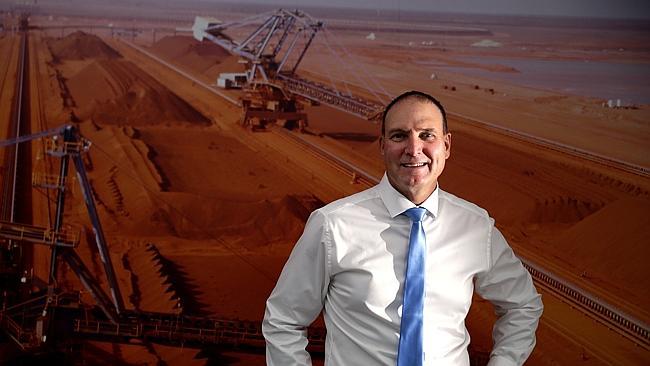Fortescue sticks to guidance on cost cuts despite headwinds
Fortescue is chipping away at its production costs but the ability to extend the cost-cutting is under pressure.

Andrew Forrest’s Fortescue has continued to chip away at its production costs. But the ability to extend the cost cutting beyond the current run of 11 consecutive quarters is now under pressure on a number of fronts.
The pressure is coming from the rise in oil prices, the exchange rate, higher shipping costs and other factors. But Fortescue is sticking to its guidance for cash costs of production for the 2017 financial year to come in at an impressive $US12-$US13 a tonne range.
Cash costs in the September quarter reflected the challenge ahead by coming in at $US13.55 a tonne. That was nevertheless a margin-boosting 5 per cent reduction on the preceding June quarter and a massive 20 per cent reduction on the previous corresponding period.
The group’s ability to drive down costs to best or near-best in the Pilbara means it has been able to keep its all-in costs of production in a $US28-$US30 a tonne range, leaving it a fat margin on current prices of $US58 a tonne, even after allowing for Fortescue’s lower-grade production.
Its realised price for the September quarter was $US48.36 a tonne. That represented 82.5 per cent capture of the headline market price, which is based on iron ore grading a higher 62 per cent iron.
The realisation was below the 85-90 per cent price capture Fortescue normally achieves. But the company says it expects a return to the 85-90 per cent price range for the rest of the financial year.
In the quarter, Chinese steelmakers were prepared to pay up for higher grade material to capture the higher steel prices available. But with the easing of steel prices, the expectation is they will return to the lower priced material to maintain margins, lifting Fortescue’s price capture back in to the 85-90 per cent range.
Chief executive Nev Power said iron ore and steel markets continued to be supported by infrastructure and housing activity in China in the September quarter.
Steel consumption remained stable and a fall in domestic iron ore production was absorbing the new supplies coming from Gina Rinehart’s Roy Hill mine in the Pilbara, and Vale’s new project in Brazil.
Mr Power said the focus remained “firmly on continuing to innovate, improve productivity and efficiency for ongoing cost improvements, debt reduction and enhanced shareholder value”. Debt reduction remains the order of the day ahead of the group moving to begin spending on the Firetail mine development in 2019-2020.
Fortescue paid $US700 million ($911m) off debt in the quarter, cutting net debt to $US4.2bn and net gearing to a comfortable 33 per cent (gross gearing is expected to fall below 40 per cent in the 2017 financial year).

To join the conversation, please log in. Don't have an account? Register
Join the conversation, you are commenting as Logout